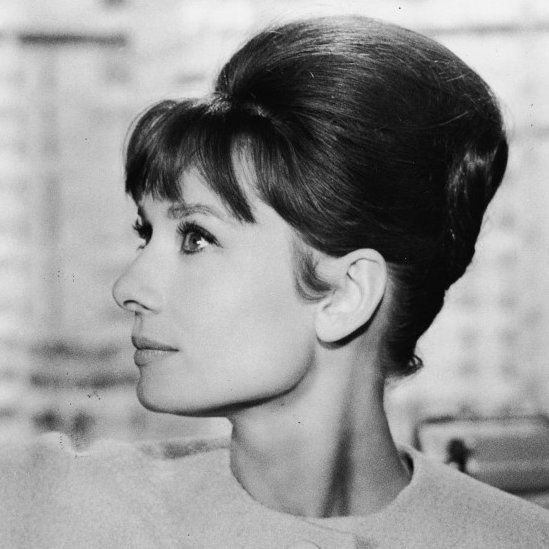Beehive Beauties: Unraveling the Elegance and Influence of 1960s Beehive Hairstyles

Introduction:
The 1960s was a decade of unprecedented cultural and fashion evolution, and one of the most iconic and enduring trends to emerge from this era was the beehive hairstyle. Characterized by its towering silhouette, intricate construction, and bold elegance, the beehive became a symbol of the Swinging Sixties. In this extensive exploration, we journey into the history, cultural impact, styling techniques, and enduring legacy of the beehive hairstyle, unraveling the intricate details that made it a defining element of 1960s fashion.
Chapter 1: The Birth of the Beehive
1.1 Inspiration and Origins:
The beehive hairstyle, also known as the B-52 or the hive, originated in the early 1960s, drawing inspiration from ancient styles, particularly the “gibson girl” updos of the early 20th century. The term “beehive” itself alludes to the hive-like structure and the voluminous shape resembling a beehive.
1.2 Celebrity Endorsement:
The beehive gained widespread popularity when celebrities like Audrey Hepburn and Brigitte Bardot embraced the trend. However, it was hairstylist Margaret Vinci Heldt who officially introduced the beehive in 1960, creating a sensation that would shape the beauty standards of the decade.
Chapter 2: Construction of the Beehive
2.1 Teasing and Backcombing:
The signature height of the beehive was achieved through extensive teasing and backcombing. Hair was teased at the roots to create volume and then smoothed over to conceal the teasing, resulting in a rounded, dome-like shape.
2.2 Support Structures:
Hairpieces, padding, and even wire supports were often used to add height and structure to the beehive. These supports allowed for a more stable and dramatic hairstyle, accommodating the ever-increasing height that became a hallmark of the beehive.
Chapter 3: Beehive Variations and Styles
3.1 Classic Beehive:
The classic beehive featured a rounded, cone-like shape, often reaching impressive heights. This style was a staple for formal events and glamorous evenings, exuding an air of sophistication and confidence.
3.2 Half-Up Beehive:
The half-up beehive offered a more casual and versatile variation. With the top portion styled into a beehive and the remaining hair left down or styled in loose waves, this version was well-suited for both day and evening wear.
Chapter 4: Beehive in Pop Culture
4.1 Iconic Moments in Film and Television:
The beehive hairstyle left an indelible mark on pop culture, with unforgettable moments in films like “Breakfast at Tiffany’s” and TV shows like “The Beverly Hillbillies.” Stars like Dusty Springfield and Aretha Franklin became synonymous with the beehive’s glamorous allure.
4.2 Music and Fashion:
The beehive was embraced by iconic figures in the music industry, particularly in the realm of Motown and pop. It became a symbol of rebellion and self-expression, aligning with the progressive spirit of the 1960s.
Chapter 5: Beehive Beauty Rituals
5.1 Salon Visits and Home Styling:
Achieving the perfect beehive often required a skilled hairstylist, but many women also mastered the art of styling their beehives at home. With the right tools, backcombing techniques, and ample hairspray, women could recreate the signature look.
5.2 Maintenance Challenges:
Maintaining the beehive presented challenges, as its intricate structure required regular touch-ups and careful preservation. Sleeping with a silk scarf to protect the style and periodic salon visits were essential to keep the beehive looking flawless.
Chapter 6: The Beehive’s Influence Today
6.1 Modern Interpretations:
While the beehive is undeniably associated with the 1960s, it continues to inspire modern interpretations and variations. Runways, red carpets, and fashion editorials often feature contemporary adaptations that pay homage to the timeless elegance of the beehive.
6.2 Celebrity Red Carpet Moments:
Celebrities regularly don the beehive for red carpet events, infusing a touch of vintage glamour into their looks. These modern interpretations showcase the enduring appeal and adaptability of the beehive as a hairstyle that transcends eras.
Chapter 7: Conclusion – The Enduring Elegance of the Beehive
In conclusion, the beehive hairstyle of the 1960s stands as an enduring symbol of elegance, rebellion, and creative expression. Its towering silhouette and meticulous construction became synonymous with the dynamic spirit of the Swinging Sixties, leaving an indelible mark on fashion and beauty. From Hollywood starlets to music icons, the beehive’s influence permeated every facet of popular culture, capturing the imagination of generations to come. Today, as we revisit the glamorous heights of the beehive, we celebrate not only a hairstyle but a cultural phenomenon that continues to inspire and captivate, proving that true style is timeless, and the beehive remains a beacon of beauty and creativity in the ever-evolving world of fashion.




